Florida Garden at Naples Botanical Garden

Jungles had the opportunity to work closely with architect Ted Flato Naples Botanical Garden’s Brazilian Garden, adjacent to the Florida Garden. Initially, he was supposed to design the Florida Garden based on his knowledge of Florida plant material. However, as Jungles was donating his Roberto Burle Marx mural to the Florida Garden, he instead designed […] … Read More
Jungles had the opportunity to work closely with architect Ted Flato Naples Botanical Garden’s Brazilian Garden, adjacent to the Florida Garden. Initially, he was supposed to design the Florida Garden based on his knowledge of Florida plant material. However, as Jungles was donating his Roberto Burle Marx mural to the Florida Garden, he instead designed the Brazilian Garden and sited the ceramic mural within its bounds. Often when Jungles designs, he does not feel constrained to property lines or limits of work. As he was designing the Brazilian Garden, he also took the liberty to design the areas around the garden, ultimately leading to his commission on the Visitor Center Garden.
There was dissatisfaction with the existing Florida Garden. In fairness, it was built before the restoration of the adjacent waterways and removal of invasive species that ultimately revealed long vistas to the natural Florida environment beyond. It was a self-contained 1-acre garden, disjointed, and defined by a mediocre circle of native Florida sabal palms—all planted vertically and at the same height, revolving wildflowers as well as a folly of some sort. This did not meet each named garden’s criteria of engaging and circulating patrons for at least 20 minutes within a well-rounded botanical experience.
Karen and Robert Scott, the Florida Garden’s donors, funded the rethinking of the garden. Jungles assisted with the visioning phase to garner interest during fundraising, and conceptualized the garden’s untapped potential of expanding the allocated space to include the offsite views of the untouched natural Florida landscape, Lake Tupke and Deep Lake, and the wildlife that thrive within these elements. It is not unusual to spot tarpon and blue crab in the water, and coyotes, bobcats, panthers, and bears in the surrounding preserve.
Jungles elevated the site to precipitate a variety of garden experiences with a maximum 5% slope and a circulation system that contours through parts of the garden.
Originally, the Florida Garden included two smaller gardens, the Ideas Garden and Sensory Gardens, however, it was difficult to find them. Jungles rerouted some of the circulation paths to further define an entrance between the two existing gardens. He created landforms of 10-foot-tall oolite monoliths on either side to compress the entrance and carved the tops for planters of epiphytes and cascading vines. As visitors enter through this compression, the garden slopes downhill, presenting a long vista to one of the lakes. Then the path winds 14 feet uphill to two chickee hut structures serving as event space for weddings and outdoor programming. These shelters were built by Florida’s Big Cypress Seminole Indian Tribe, consisting of palmetto thatch over a cypress log frame.
The Naples Botanical staff wanted the garden to be more inclusive of other plants that Jungles used in his gardens, perhaps a bit more theatrical than a native-only plant palette. The result is a combination of botanical specimens within a foundation of peripheral native plantings. Jungles worked with staff and water garden guru, Mark Massey, in setting large capstone boulders within the main water element. Water recirculates from the lakes to the upper pond. Gravity lends a hand in leading it back to the lake through various waterfall cascades and stream elements.
Naples is really a hotbed for plant collectors from the ’50s, ’60s, and ’70s. Many specimen palms were donated from garden member collections including Copernicia palms from Cuba, flowering yellow tabebuia trees from Brazil, and many others rescued by staff from nearby construction sites. Groundcovers include grasses and wildflowers—a mini “River of Grass.”
-
Year of Completion
2019
-
Location
Naples, Florida
-
Landscape Contractor
Naples Botanical Garden Horticultural Staff
-
Water Feature Consultant
Mark Massey
-
Photography
Robin Hill
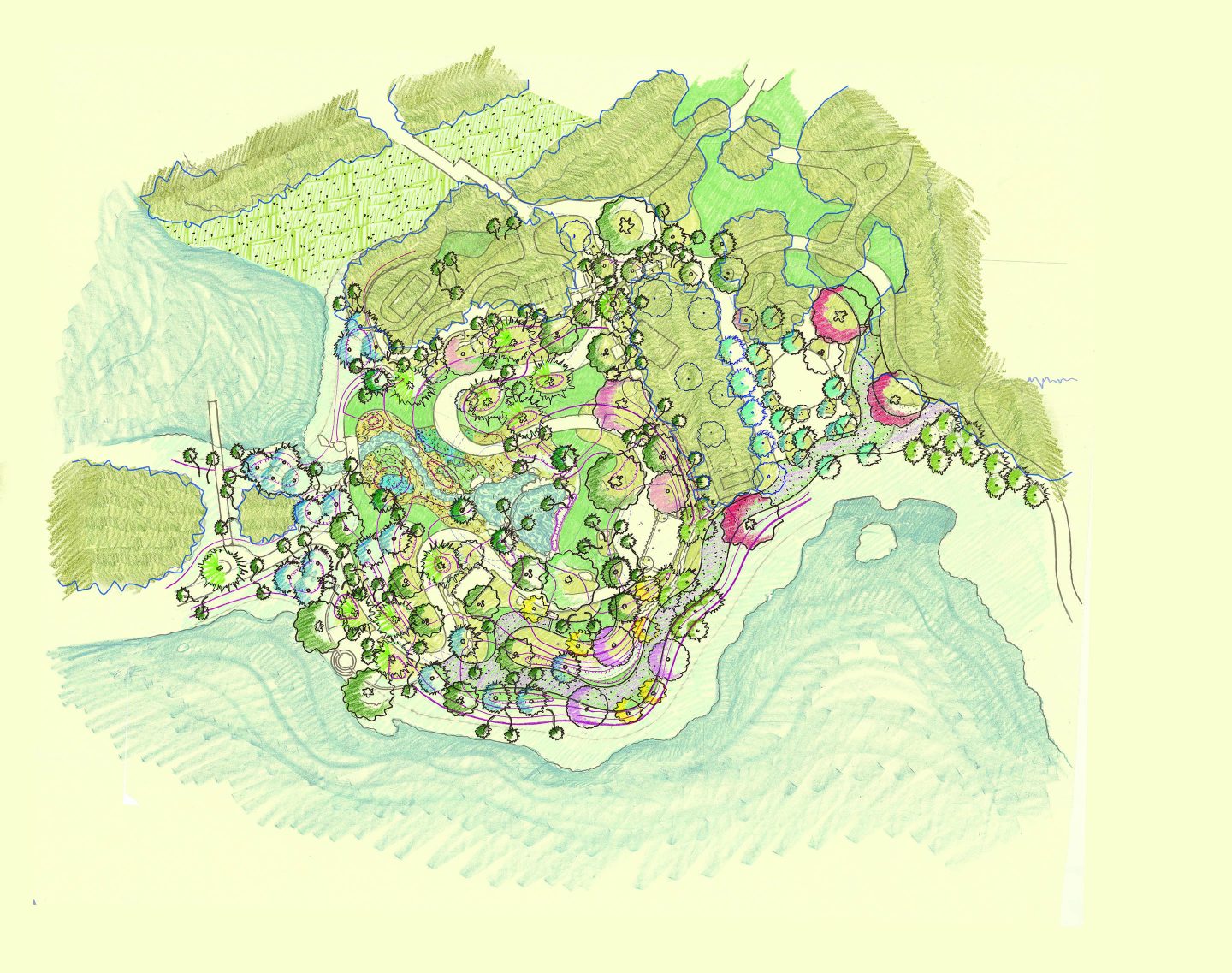

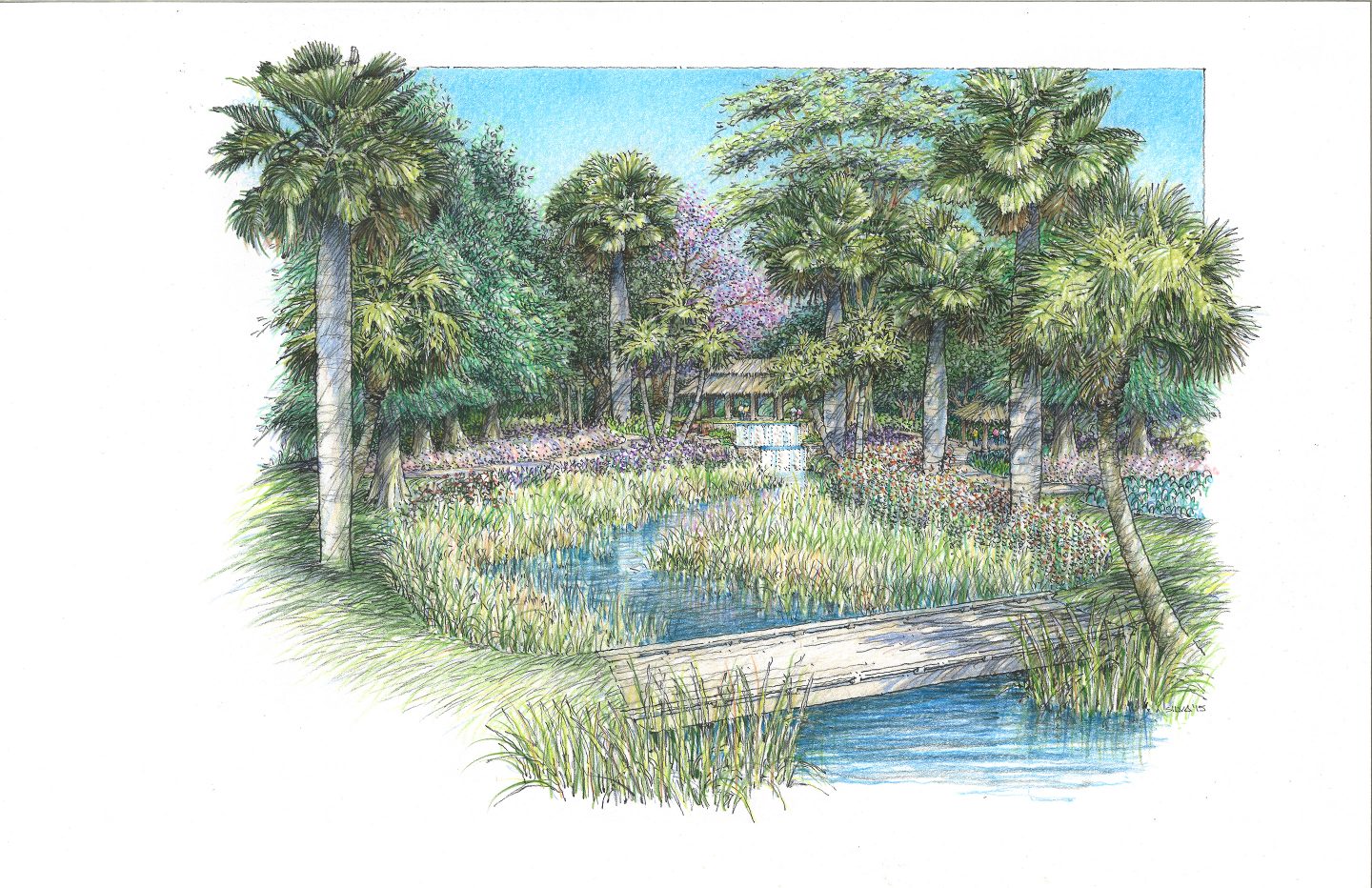
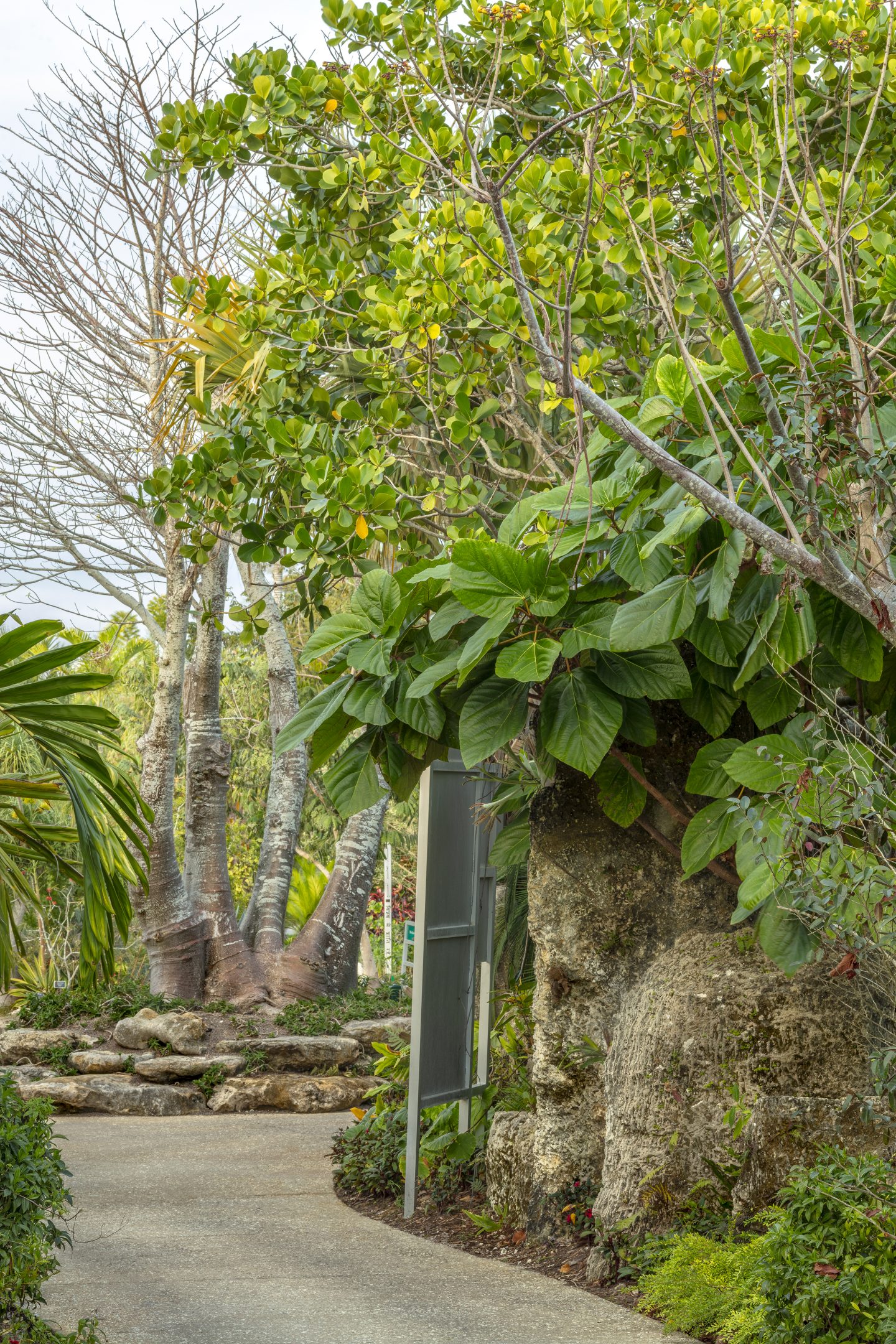
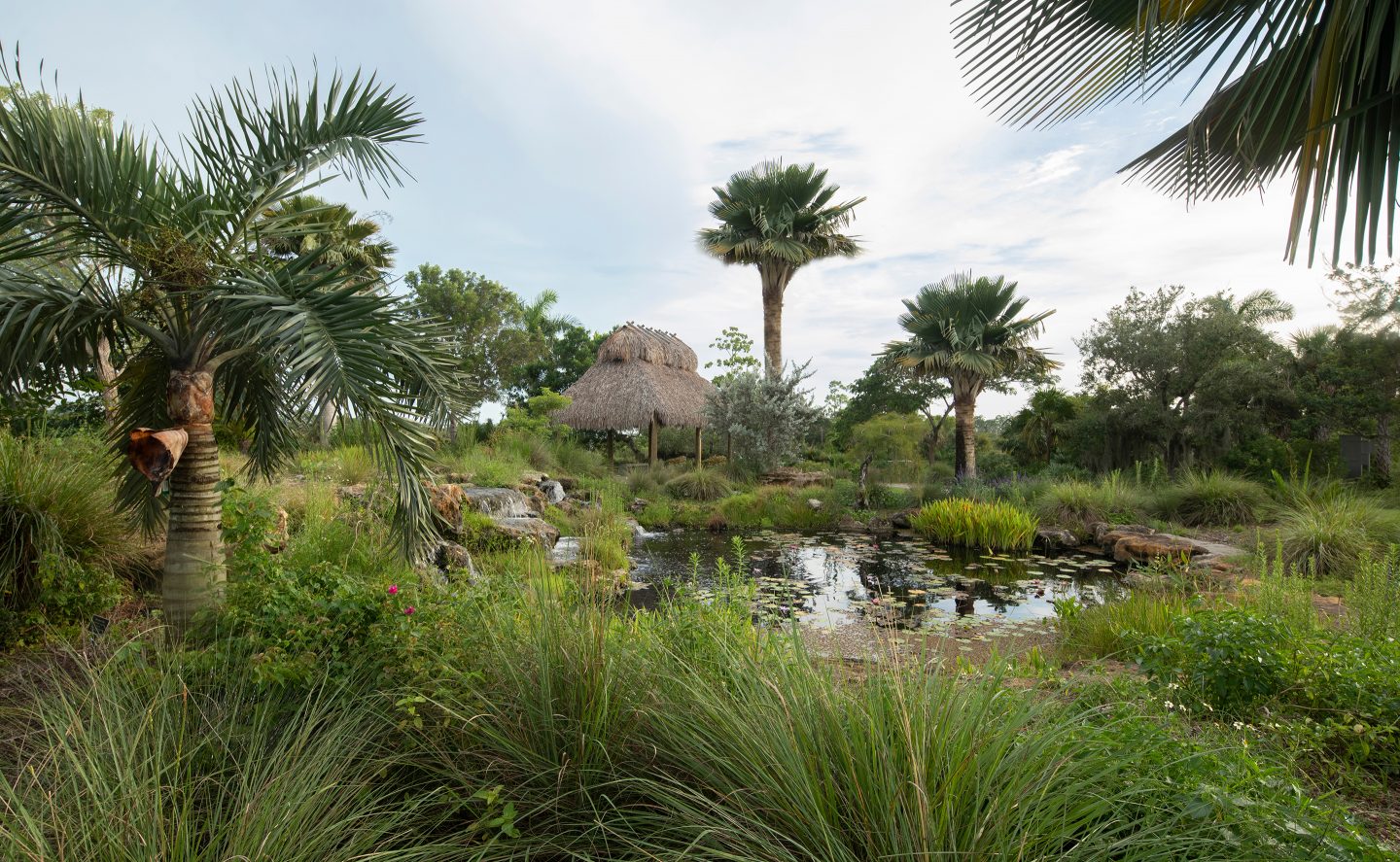
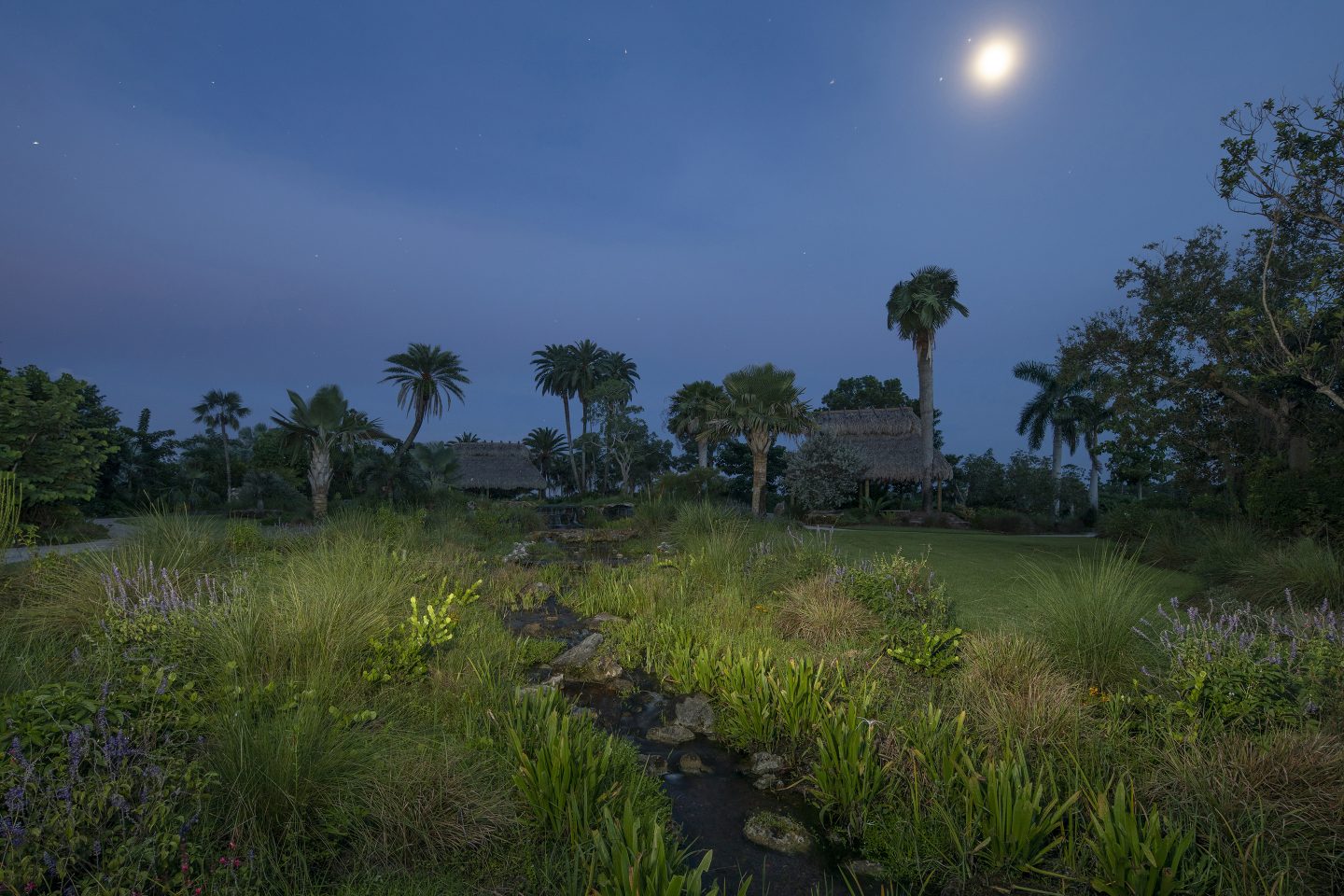
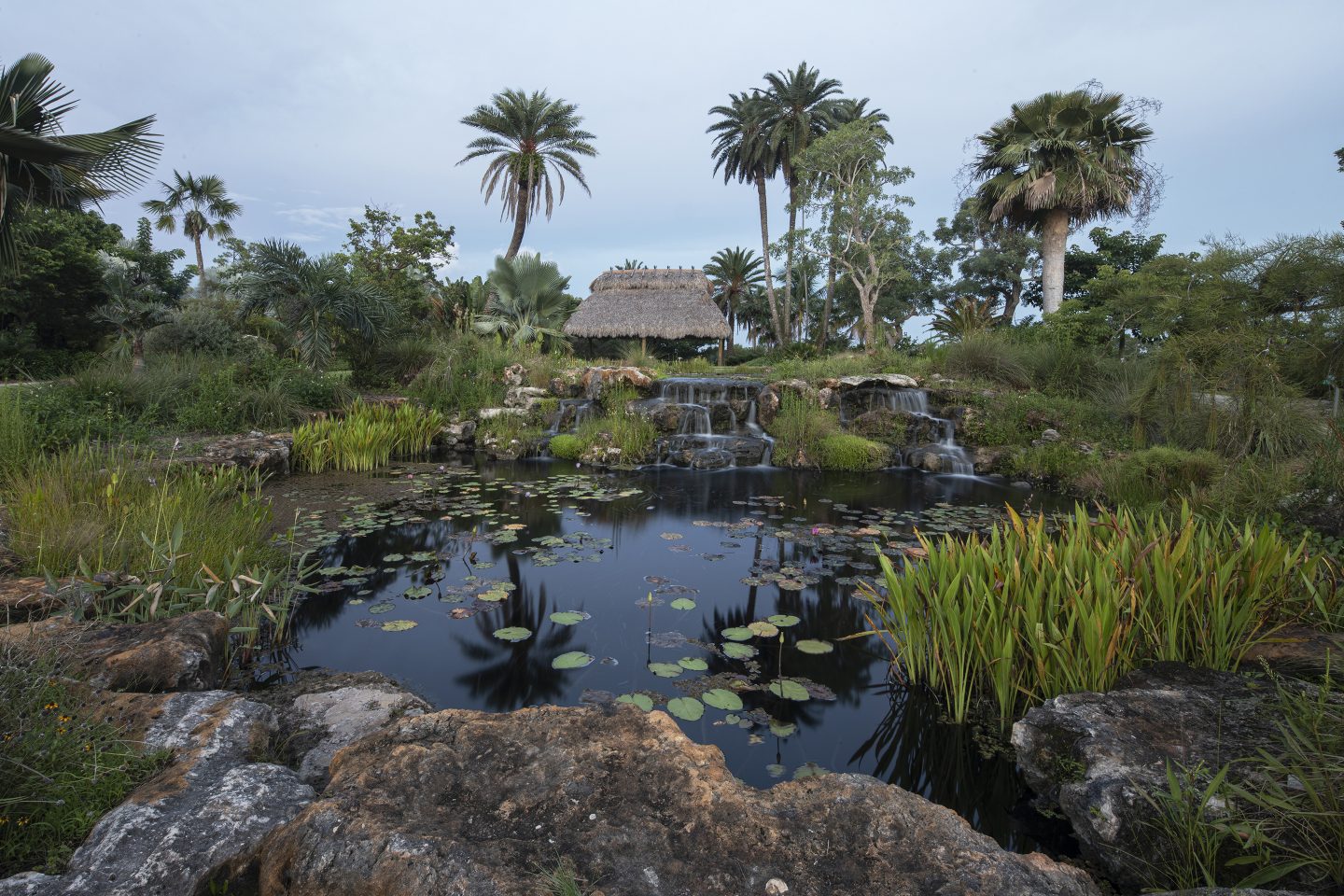
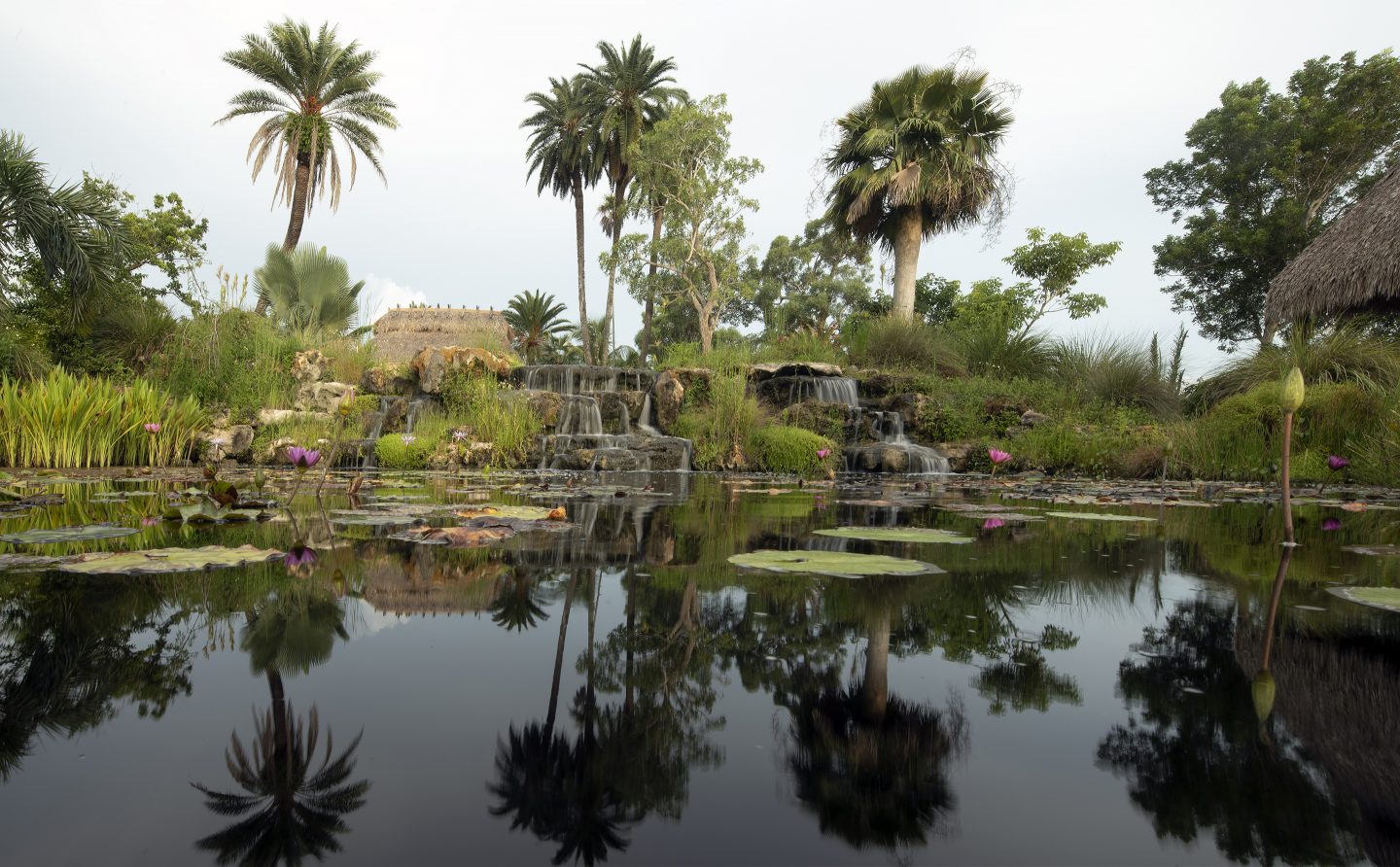
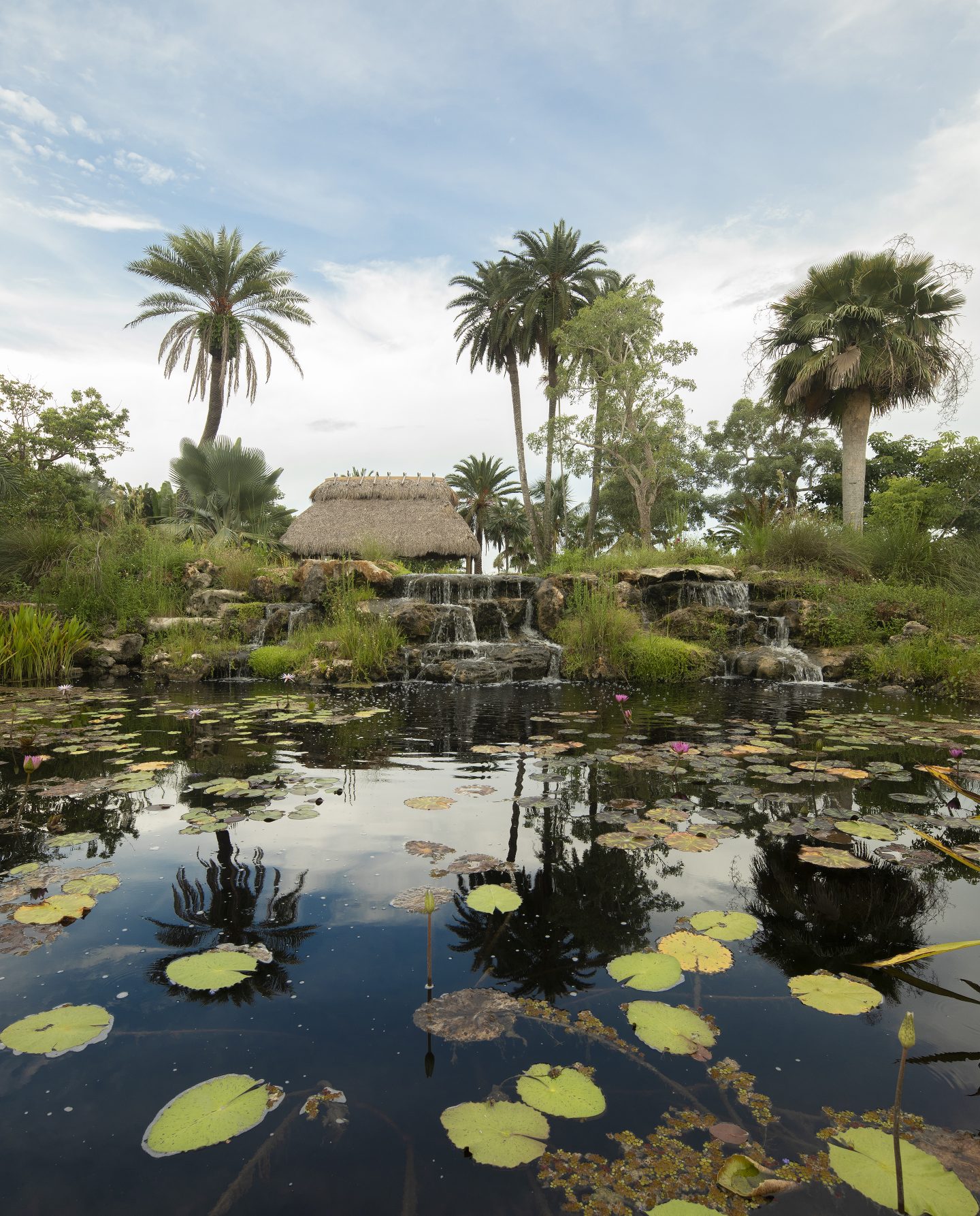
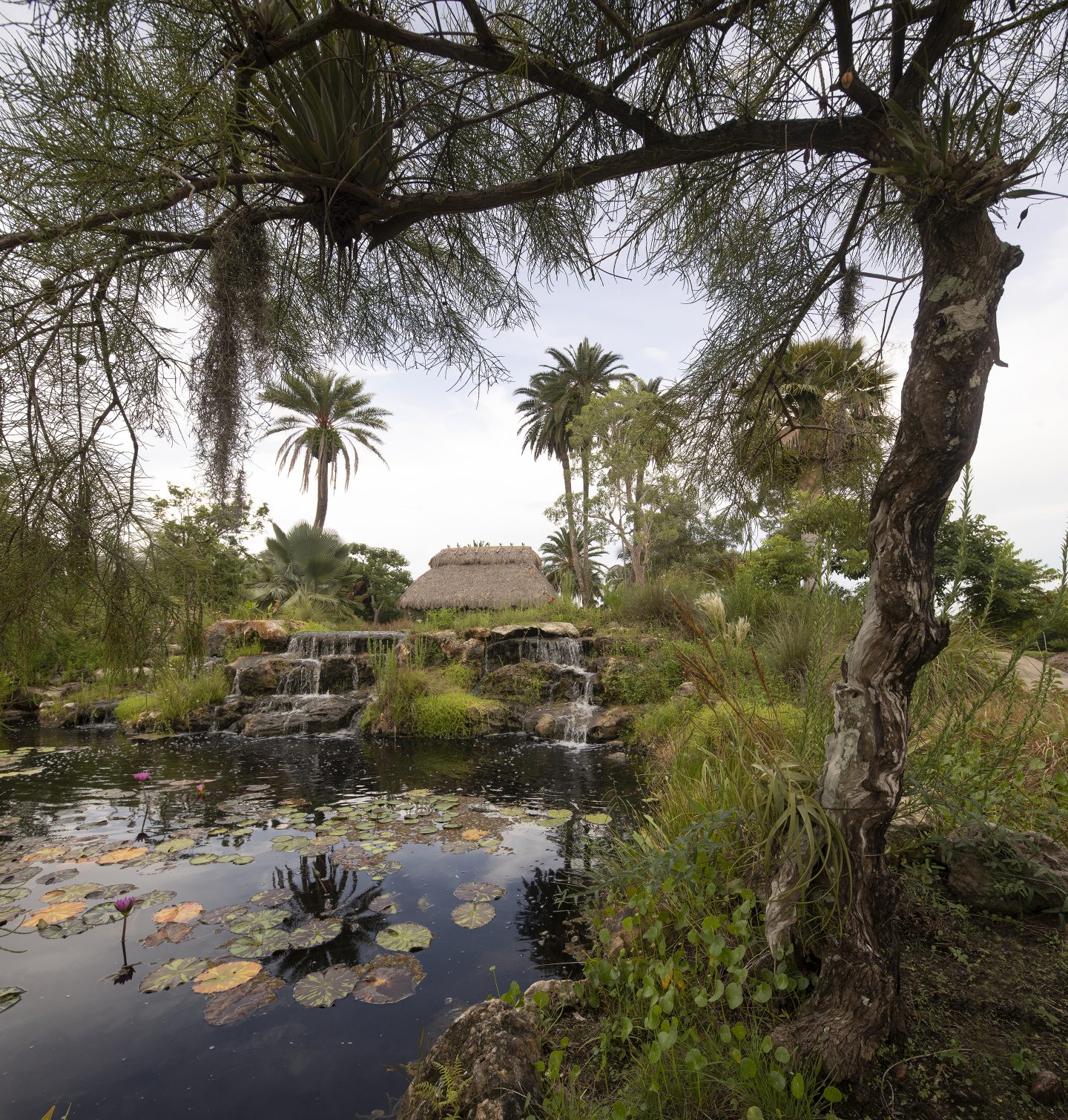
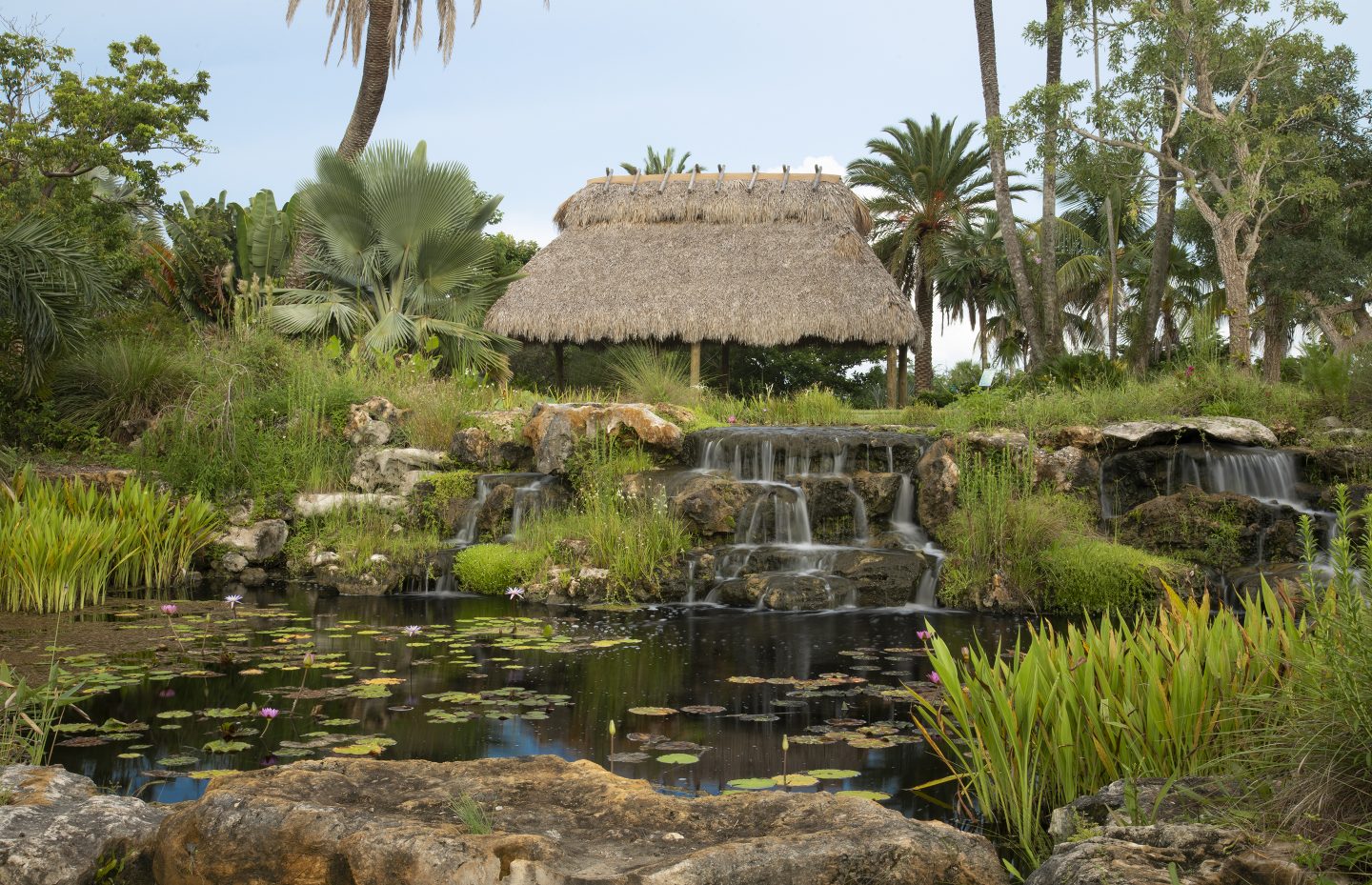
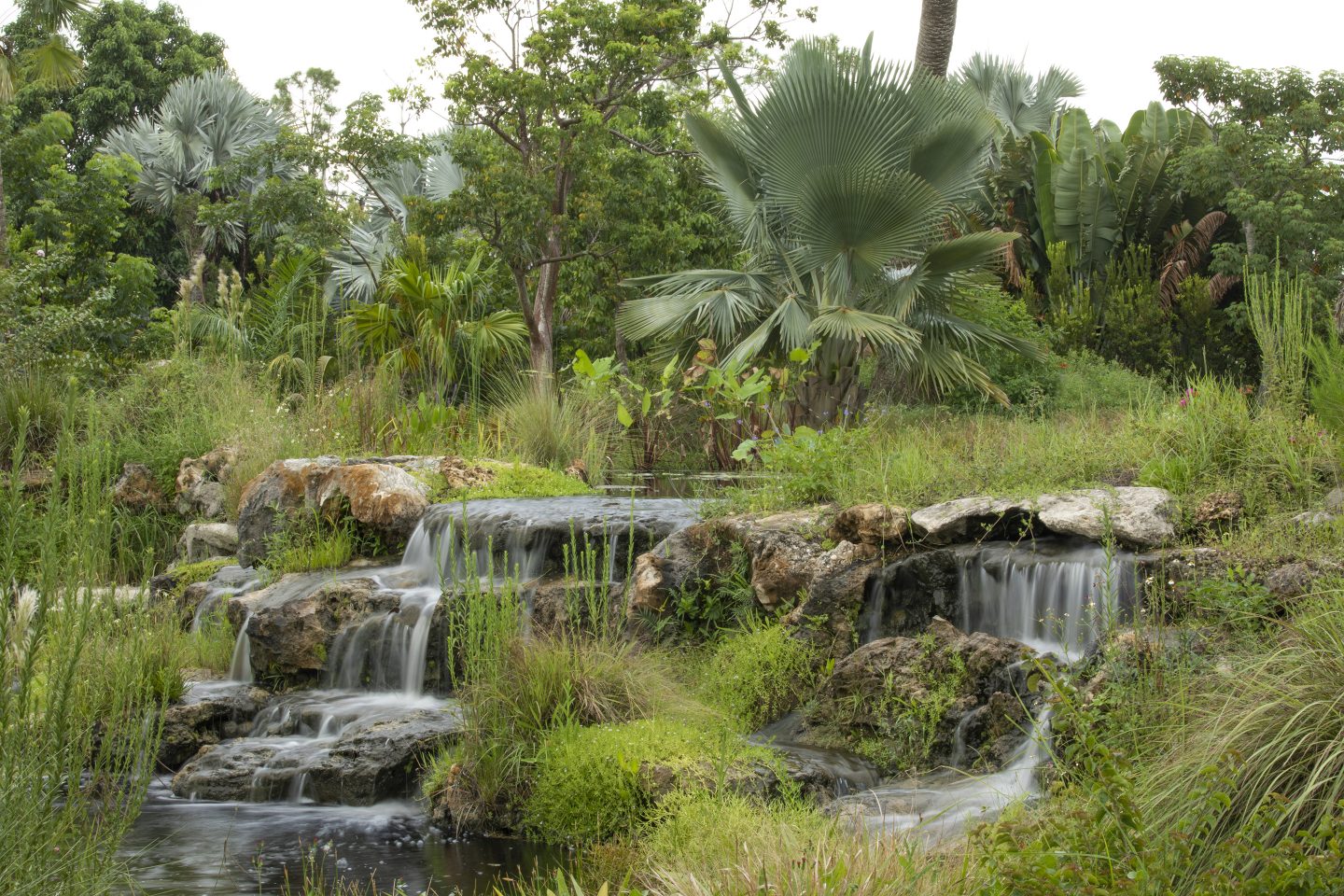
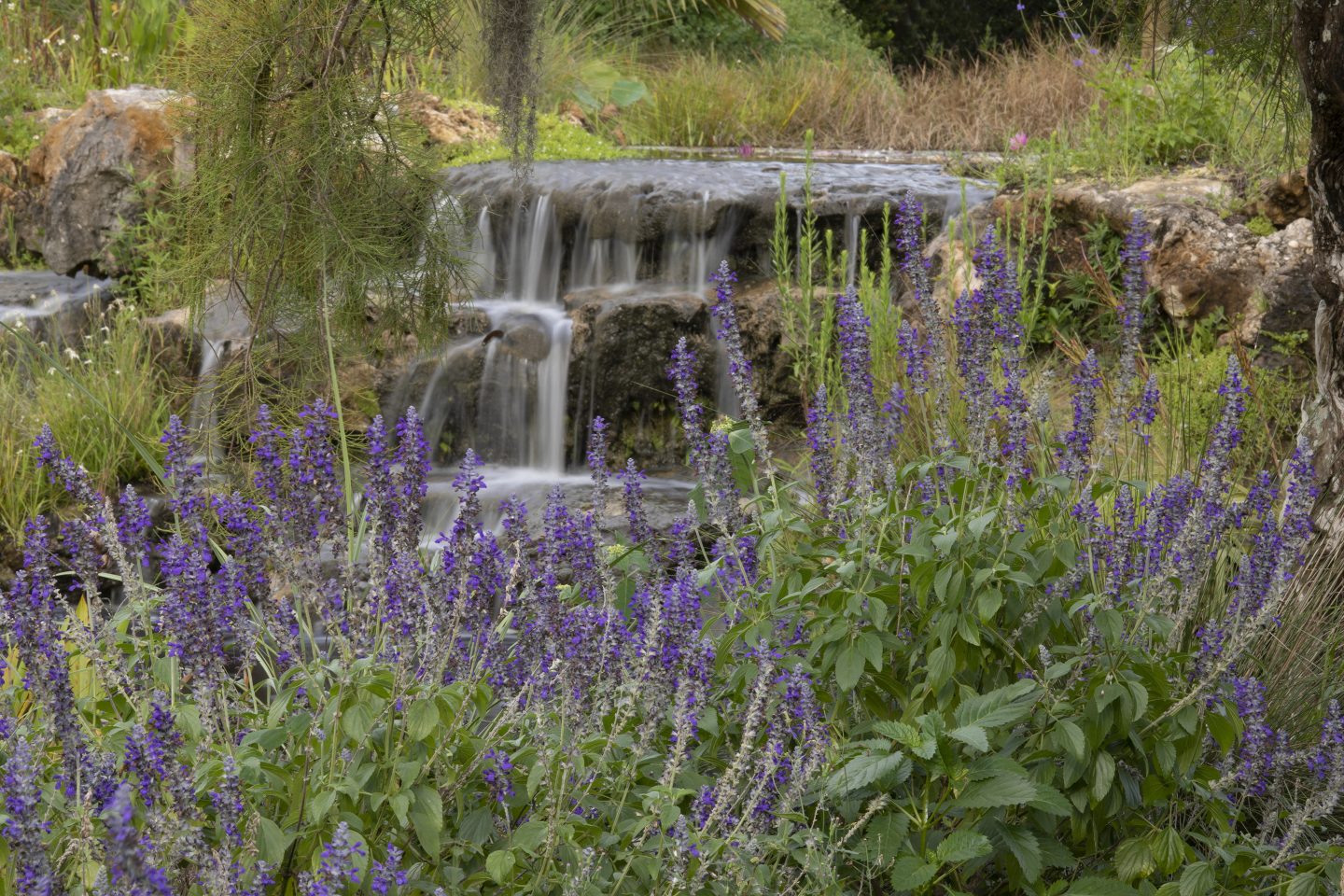
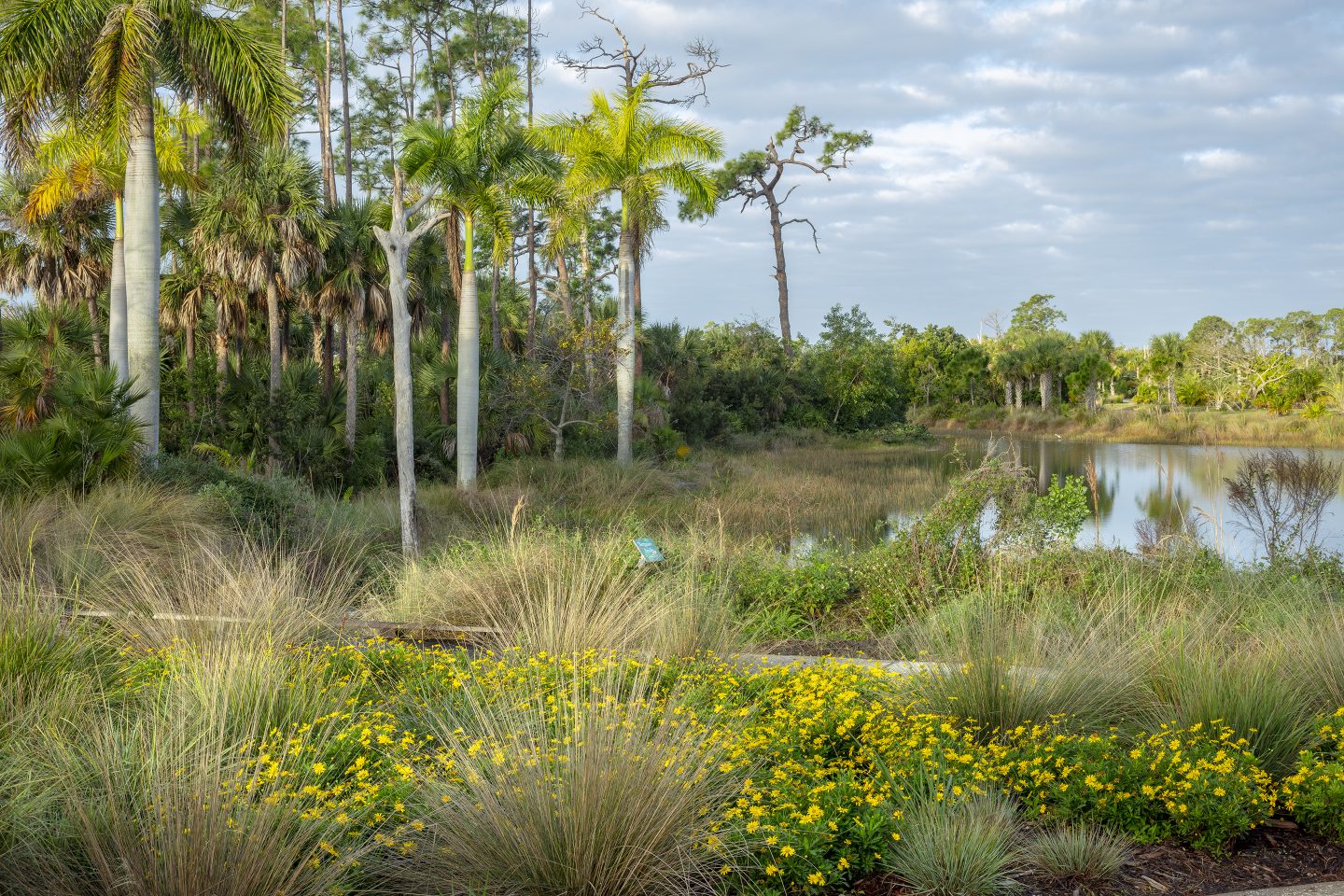
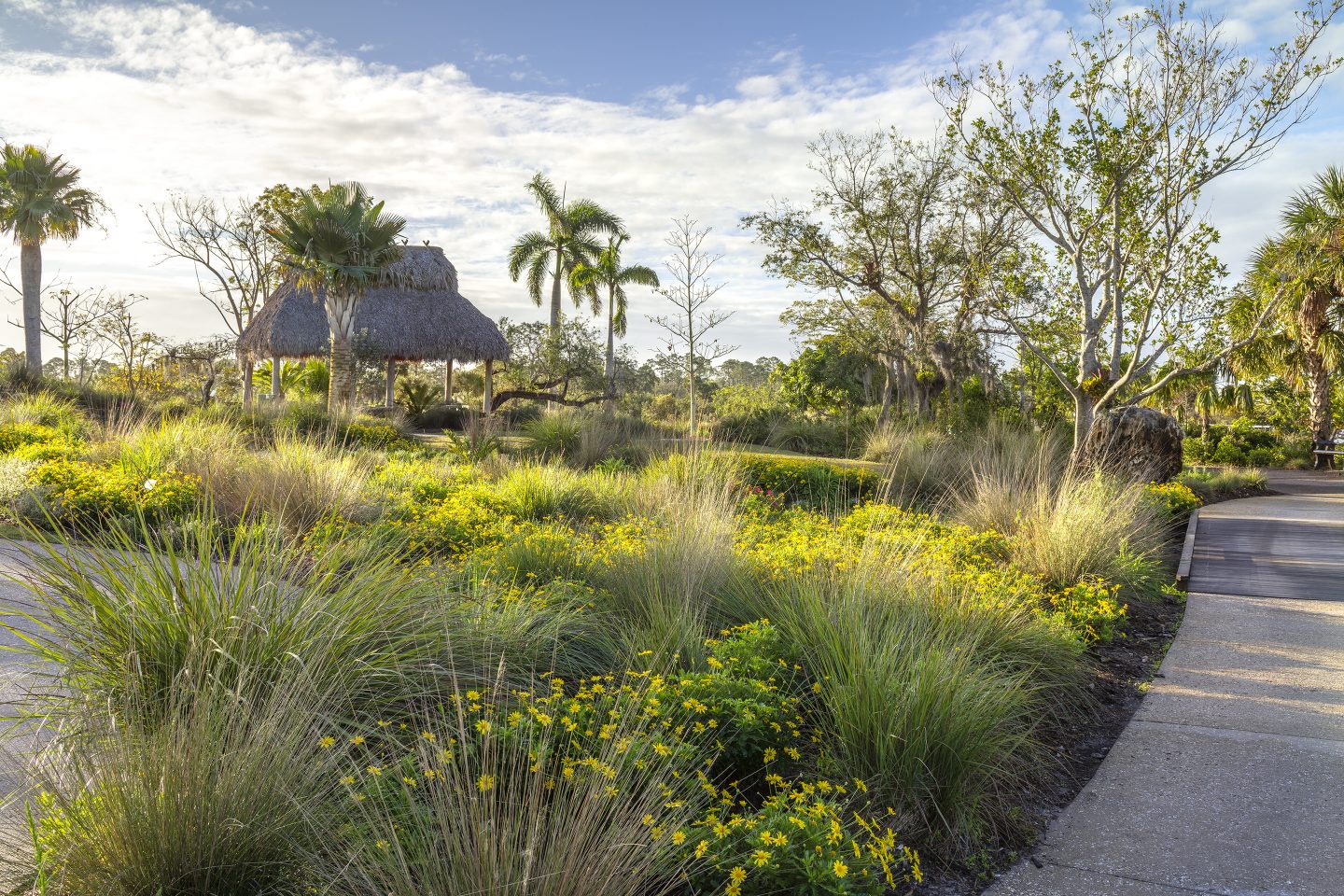
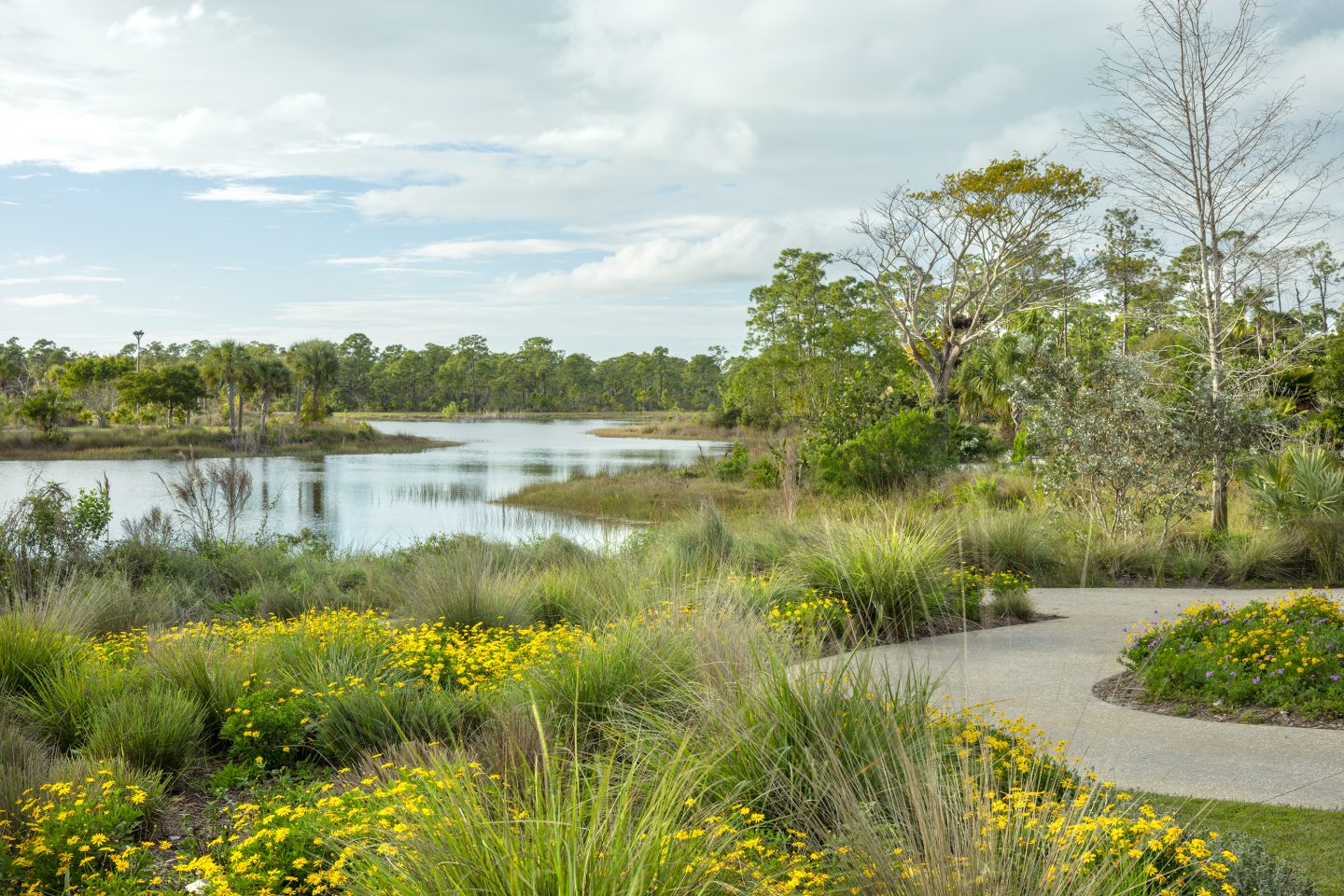
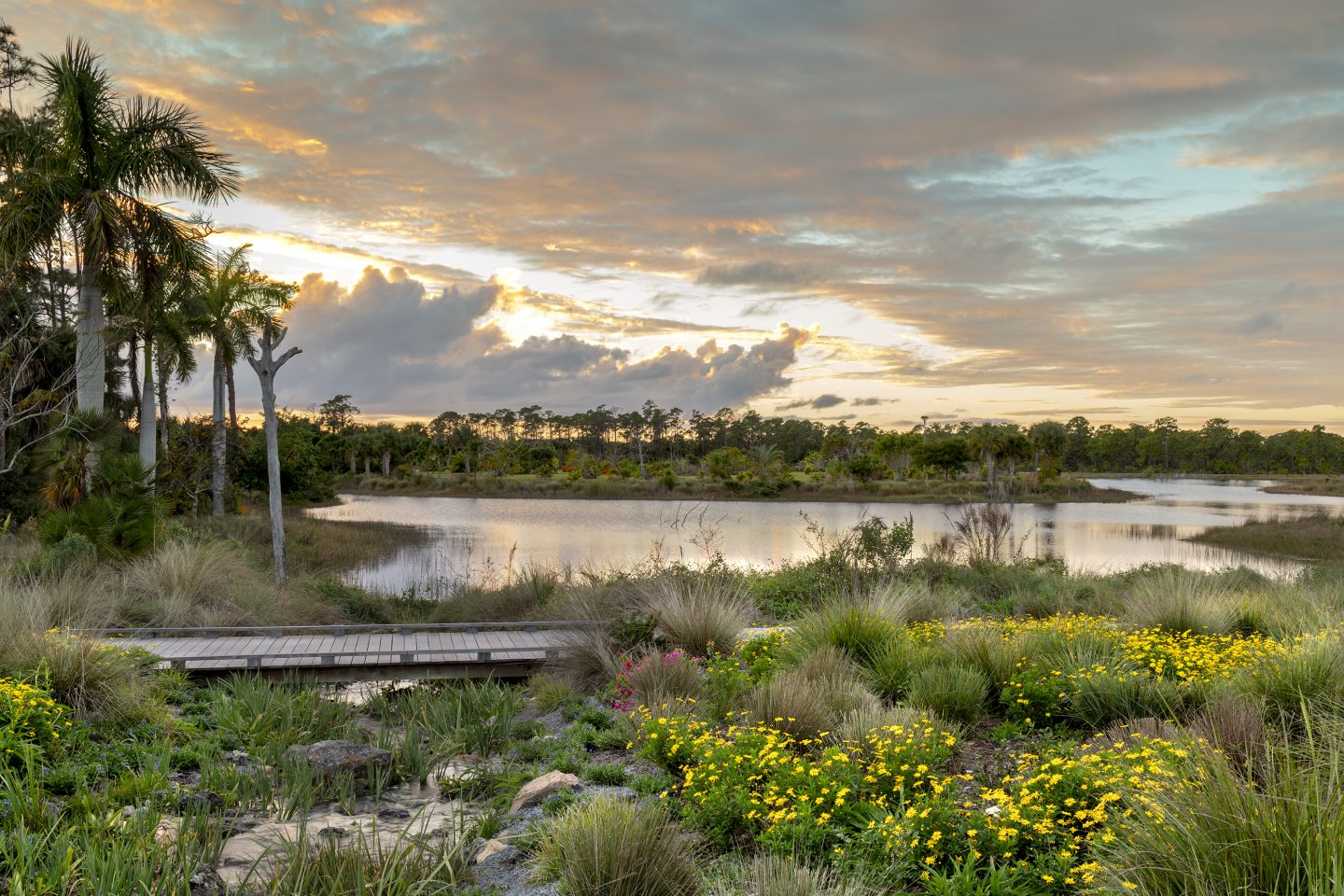
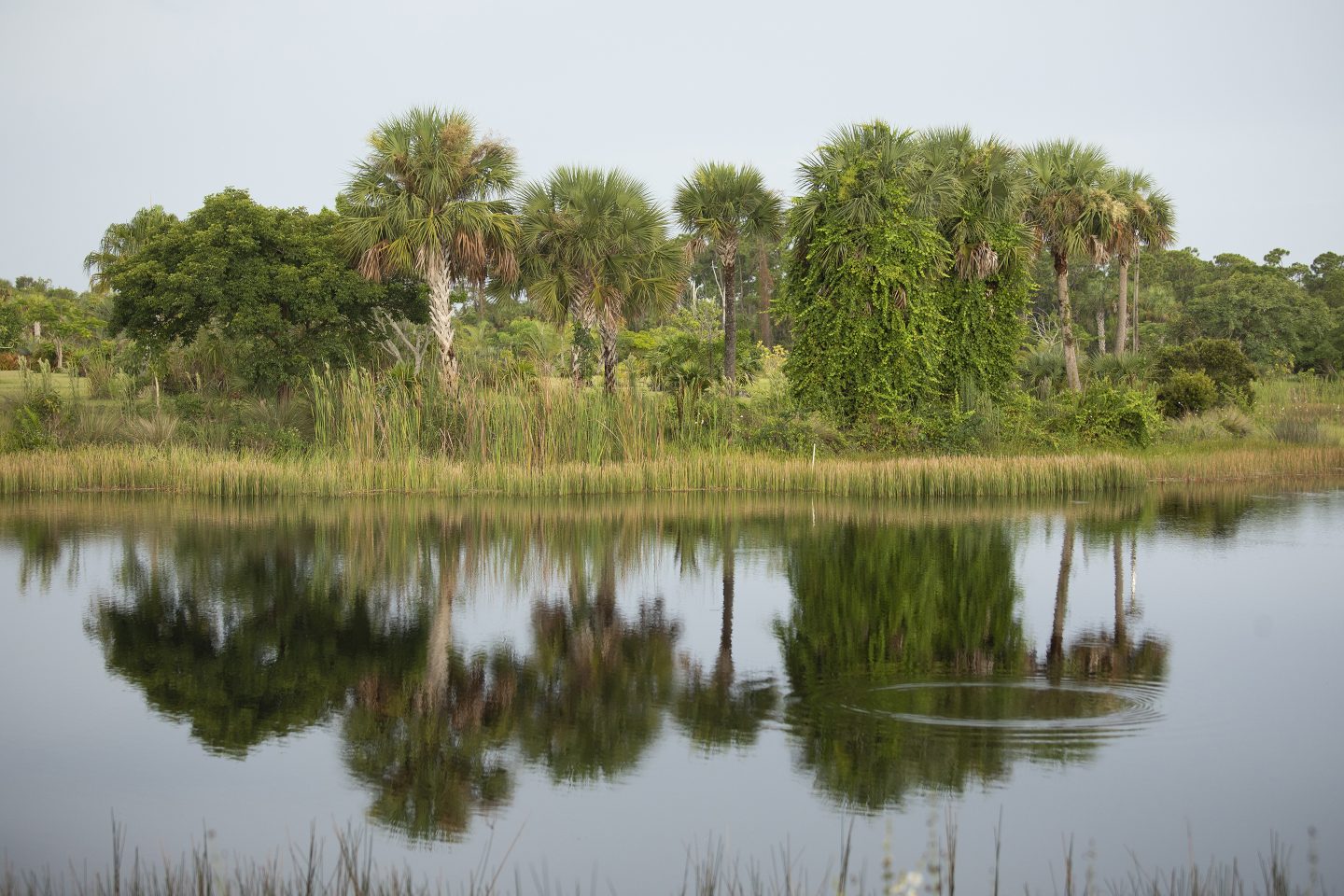
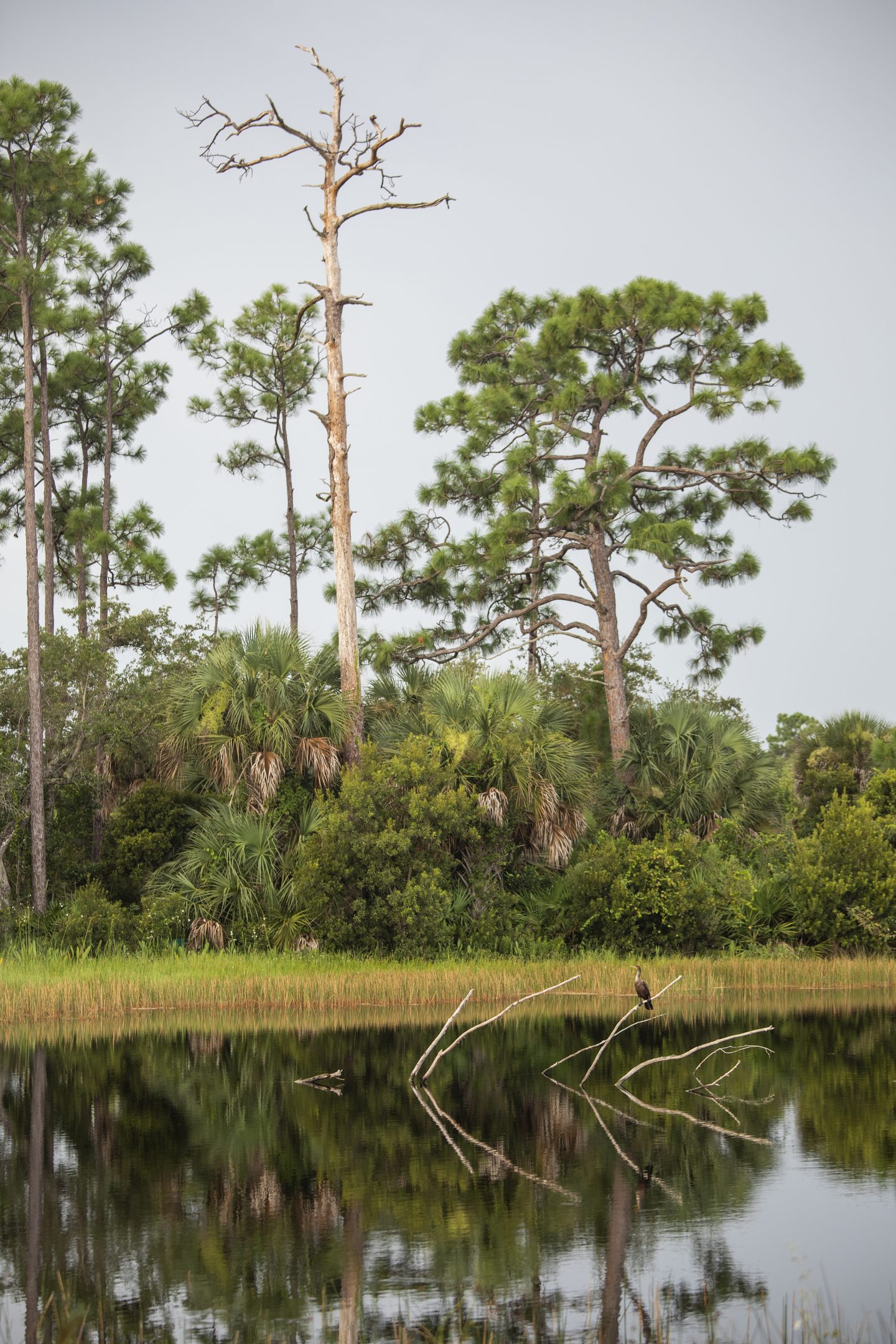
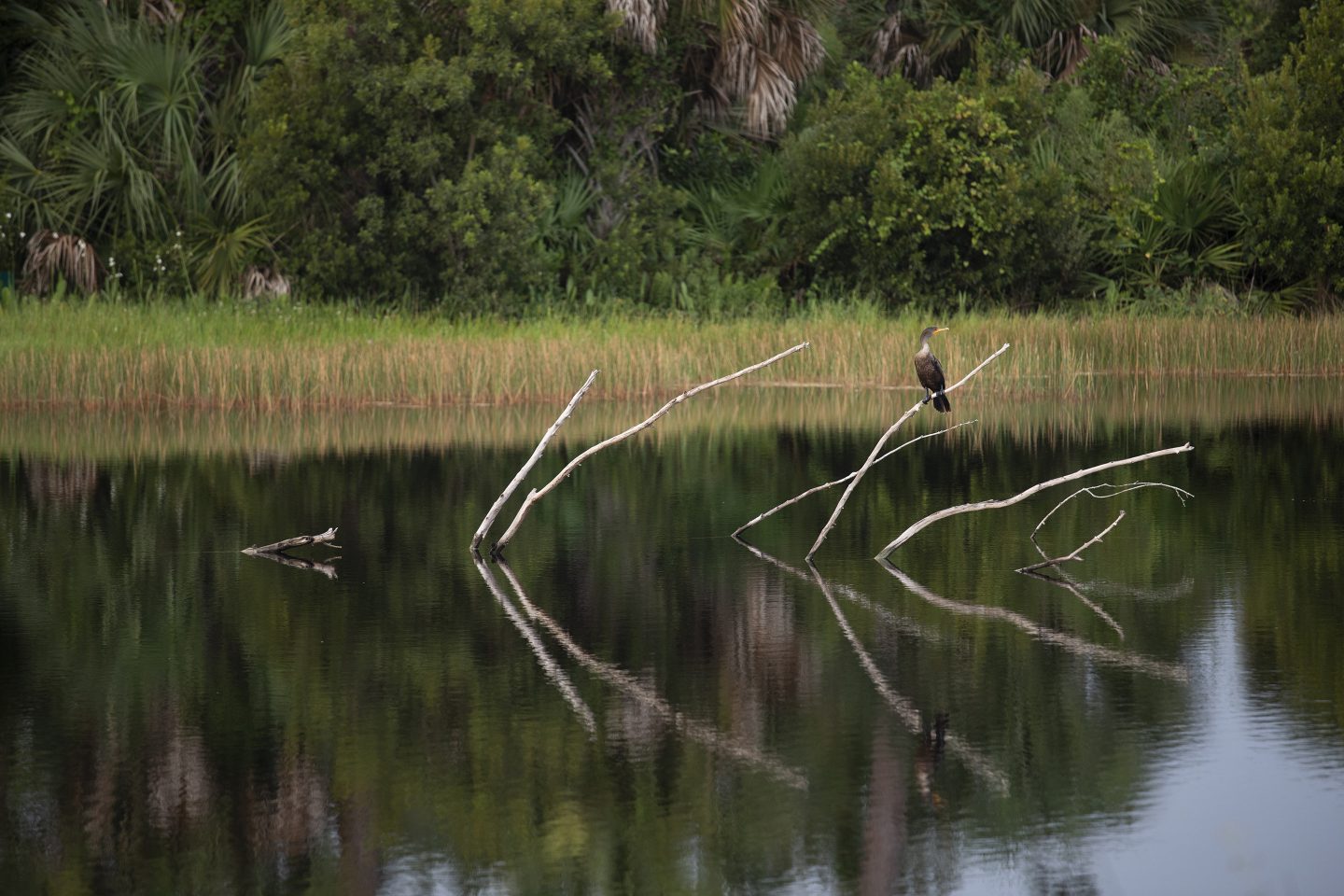
-
Previous
Swan Garden -
Next
Apogee Garden
